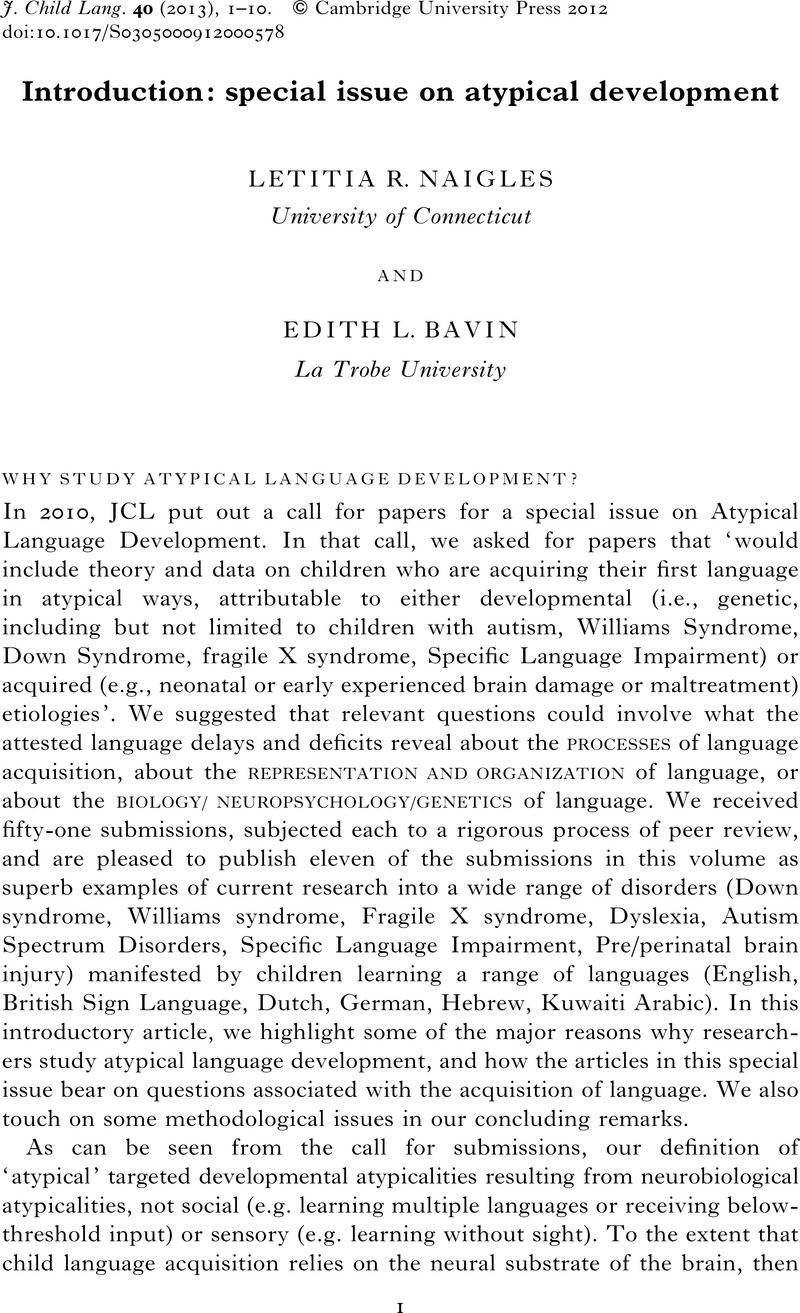Crossref Citations
This article has been cited by the following publications. This list is generated based on data provided by Crossref.
Tamis-LeMonda, Catherine S.
Kuchirko, Yana
and
Song, Lulu
2014.
Why Is Infant Language Learning Facilitated by Parental Responsiveness?.
Current Directions in Psychological Science,
Vol. 23,
Issue. 2,
p.
121.
Novogrodsky, Rama
and
Edelson, Lisa R.
2016.
Ambiguous pronoun use in narratives of children with Autism Spectrum Disorders.
Child Language Teaching and Therapy,
Vol. 32,
Issue. 2,
p.
241.
Checa, Elena
Galeote, Miguel
and
Soto, Pilar
2016.
The Composition of Early Vocabulary in Spanish Children With Down Syndrome and Their Peers With Typical Development.
American Journal of Speech-Language Pathology,
Vol. 25,
Issue. 4,
p.
605.
Håkansson, Gisela
2017.
Typological and developmental considerations on specific language impairment in monolingual and bilingual children: A Processability Theory account.
Language Acquisition,
Vol. 24,
Issue. 3,
p.
265.



